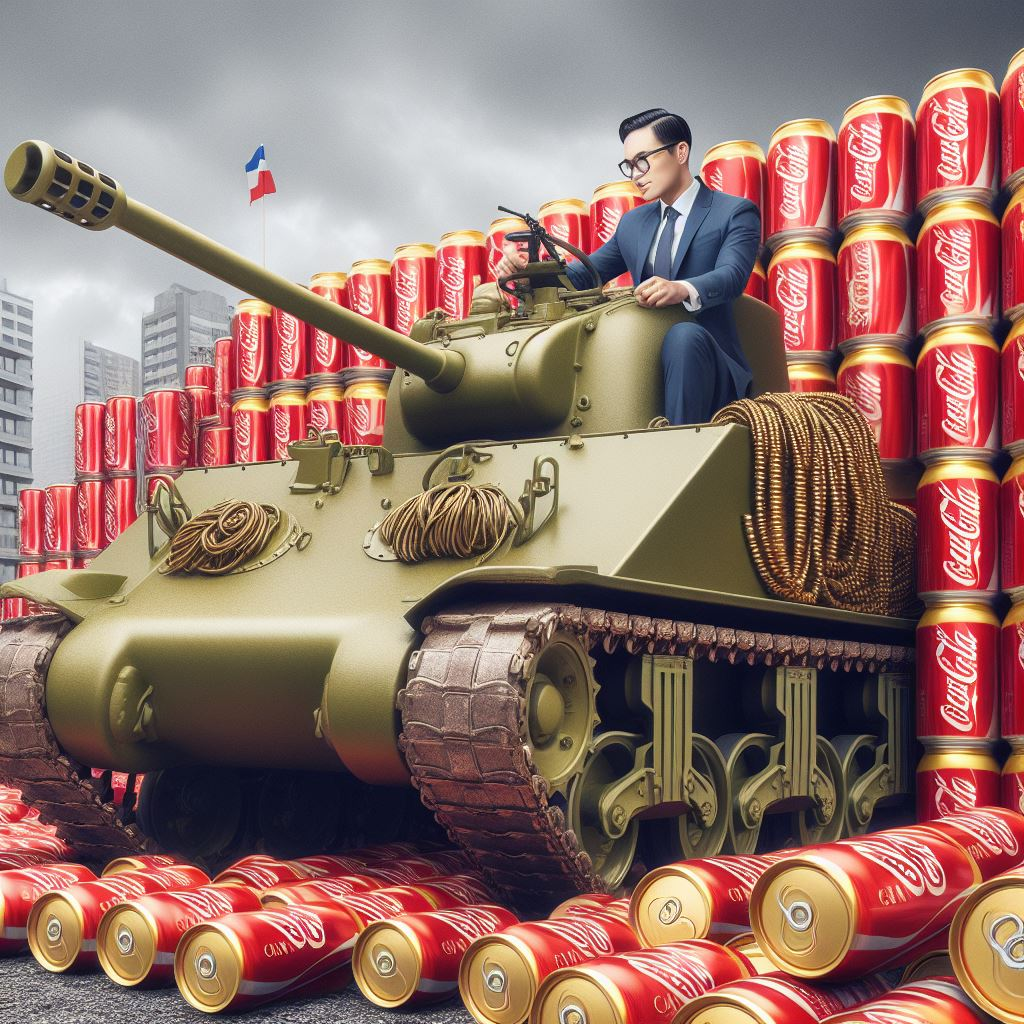Creating Attention: The Virgin Cola Tank Incident
Creating Attention: The Virgin Cola Tank Incident
Today we’re diving into a legendary marketing move that shook the cola industry – the Virgin Cola Tank Incident. Buckle up, because this story involves tanks, soda cans, and a dash of audacity.
Introduction
In the competitive world of marketing, sometimes you need to think outside the soda can. Richard Branson, the maverick entrepreneur behind the Virgin brand, decided to take on the beverage giants – Coca-Cola and Pepsi – with a bold move: driving a tank through Times Square. But did this attention-grabbing stunt lead to success, or was it a costly misstep? Let’s explore the highs and lows of the Virgin Cola tank incident.
The Bold Move
Picture this: It’s 1994, and Virgin Cola bursts onto the scene in the U.K., challenging the dominance of Coke and Pepsi. Branson, with his characteristic audacity, decides to replicate this feat in the United States. The plan? Drive a Sherman tank through Times Square, dramatically crushing a wall of Coca-Cola cans. The spectacle is unforgettable, capturing the attention of New Yorkers and the media alike.
The Initial Buzz
The tank incident generates buzz – headlines, TV coverage, and water cooler conversations. People wonder, “Who is this Virgin Cola, and could they topple the mighty Coke?” The stunt achieves its primary goal: brand visibility. But does it translate into sales?
The Pitfalls
Let’s dissect the pitfalls:
Overspending: The tank stunt is expensive. While it grabs attention, it also drains resources. Marketing budgets are finite, and allocating too much to a single event can leave other crucial areas neglected.
Short-Term vs. Long-Term Impact: The tank incident is a flash in the pan. Yes, it makes headlines, but sustaining interest requires consistent effort. A one-time spectacle doesn’t guarantee lasting success.
Competition Strikes Back: Coke retaliates. They don’t roll out their own tank, but they do something more insidious: systematic kneecapping. Coke leans on retailers, making offers they can’t refuse. Virgin Cola vanishes from shelves, not due to lack of demand, but because the competition plays hardball.
The Valuable Lesson
Branson reflects on the failure: “We didn’t have something completely unique.” Virgin Cola tasted marginally better, but that wasn’t enough. The lesson? Be palpably better than the competition. It’s not about gimmicks; it’s about delivering real value.
Takeaways
Three takeaways for our marketing warriors:
Differentiate or Die: If you’re going to drive a tank (metaphorically), ensure your product or service stands out. What makes you better?
Sustainable Strategies: Attention-grabbing stunts are like sugar rushes – thrilling but fleeting. Invest in long-term strategies that build lasting relationships.
Know Your Competition: Understand their moves. Coke’s kneecapping taught Branson a painful lesson.
Conclusion
The Virgin Cola tank incident remains iconic, but it didn’t win the soda wars. Today, Virgin Cola is a footnote in beverage history. So, next time you’re tempted to drive a tank, ask yourself: Is it a strategic move or just a flashy spectacle?
Remember, marketing isn’t about crushing cans; it’s about winning hearts and minds.
Thanks for tuning in, marketing mavericks! Until next time, keep your tanks fueled and your strategies sharper than a cola bottle cap. Cheers!
Sources:
What Richard Branson learned when Coke put Virgin Cola out of business
What we learned from Virgin Cola
Use My Amazon Associate Link Below To Make Purchases
Thanks For Listening Everyone!
Venmo - @jason-Stclair-09262
CashApp - $stclair316
Commission Earned
https://www.instagram.com/jason_stclair/

